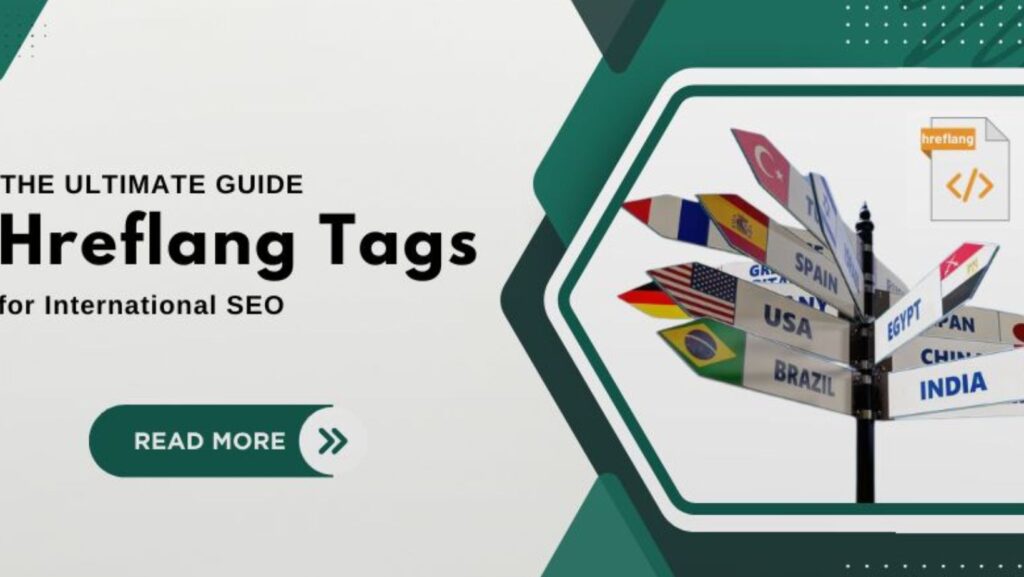
Growing your website worldwide? Your business must be seen by the right audience online. But it’s not only about page translation. Search engines need to be informed which version of your content fits a particular language and area. Hreflang tags are useful in that regard.
Hreflang tags let Google and other search engines provide the proper version of your webpage to users depending on their language and region. Without them, your UK pages could rank in Canada instead of the United States, or your English content could appear for Spanish users. That’s a lost chance and a perplexing experience for guests.
Overlooking localization could set you back. Research indicates that 72% of consumers like webpages in their native spoken language. Even more crucial? Localized websites can increase conversions by as much as 70%. People literally trust brands that speak their language.
Though English is not the only language, it rules the web. Many of the world’s searches take place in languages other than English. Your site is missing possible traffic, engagement, and purchases if it is not targeted at foreign consumers.
Let’s talk about what hreflang tags are and how you can use them to make your international SEO plan stronger.
Hreflang tags are a simple but powerful tool for international SEO. They tell search engines which version of a webpage is meant for which audience based on language and region. This helps Google serve the right content to the right users, improving both rankings and user experience.
Google introduced hreflang tags to solve a common problem for multilingual and multi-regional websites. Before Hreflang, businesses struggled with search engines ranking the wrong version of their content in the wrong country. A French user might land on an English page, or an Australian visitor might see US pricing. That’s frustrating for users—and bad for conversions.
Hreflang implementation ensures that people see content in their preferred language, reducing bounce rates and increasing engagement. It also helps avoid duplicate content issues. If your site has multiple versions of the same page (like “example.com/en/” and “example.com/fr/”), Google could see them as duplicate content and choose one to rank—potentially the wrong one. Hreflang clarifies that these pages are meant for different audiences, preventing SEO conflicts.
In short, hreflang tags improve global search visibility, enhance user experience, and keep your content structured for search engines. However, to see the full benefits, they need to be implemented correctly. Let’s dive into how they work.
Hreflang tags are simple in structure but essential for international SEO services. They tell search engines which version of a webpage belongs to which audience based on language and region.
Without them, search engines might serve the wrong version of your site, confusing users and hurting conversions.
Hreflang Tag Structure
A basic hreflang tag looks like this:
- <link rel=”alternate” hreflang=”en” href=”https://example.com/en/” />
- <link rel=”alternate” hreflang=”es” href=”https://example.com/es/” />
Each tag specifies:
- rel=”alternate” – Signals an alternate version of the page.
- hreflang=”x” – Defines the language and (if needed) the regional variant.
- href=”URL” – The URL of the corresponding page.
Understanding Language and Regional Codes
Hreflang uses ISO 639-1 language codes like:
- en (English)
- es (Spanish)
- fr (French)
For regional variations, ISO 3166-1 country codes are added:
- en-US (English – United States)
- en-GB (English – United Kingdom)
- fr-CA (French–Canada)
If your content is language-specific but not region-specific, use only the language code (fr). If it’s tailored to a specific country, use both (fr-CA).
Hreflang tags can be added in three ways:
- HTML <head> – Placed within the <head> section of each page.
<link rel=”alternate” hreflang=”de”href=”https://example.com/de/” />
Best for:
- Websites with a manageable number of language versions.
- Sites where each page has a unique URL per language.
Drawbacks:
- It can be difficult to maintain if a site has hundreds or thousands of pages.
- Every page must reference all language versions, increasing <head> size.
- HTTP Header – Used for non-HTML content like PDFs.
Link: <https://example.com/de/>; rel=”alternate”; hreflang=”de”
Best for:
- PDFs, Word docs, and other non-HTML assets.
- When you can’t modify the page <head> or use an XML sitemap.
Drawbacks:
- Not suitable for standard web pages.
- Requires server-side implementation, which can be complex.
- XML Sitemap – Recommended for large websites.
<url>
<loc>https://example.com/</loc>
<xhtml:link rel=”alternate” hreflang=”es” href=”https://example.com/es/” />
</url>
Best for:
- Large websites with many language variations.
- E-commerce stores and news sites where URLs frequently change.
- Easier centralized management—no need to edit individual pages.
Drawbacks:
- Requires regular sitemap updates.
- If search engines can’t fetch the sitemap, hreflang won’t work.
Which Method Works Best?
Implementation Method
Best For
Ease of Maintenance
Drawbacks
HTML <head>
Small to mid-sized websites
Moderate
Hard to scale for large sites
HTTP Header
Non-HTML files (PDFs, etc.)
Harder (server-side setup)
Not for standard web pages
XML Sitemap
Large, multilingual websites
Easier to manage
Requires regular updates
Each method has its use case, but XML sitemaps work best for large sites, while HTML <head> tags are common for simpler setups. Whichever method you choose, correct hreflang implementation is crucial for international SEO to work effectively.
Not every website needs hreflang tags, but if you’re targeting multiple languages or regions, they’re essential. Without them, search engines might display the wrong version of your content, leading to poor user experience, lower conversions, and ranking issues. Here’s when you should implement hreflang tags:
- Websites with Multiple Language Versions – If your website has content in different languages (e.g., English, Spanish, French), hreflang tells search engines which version to show based on a user’s language preference. This prevents English content from appearing in French search results and vice versa.
- Regional Content Variations (en-US vs. en-GB) – Even if your content is in the same language, regional differences matter. A UK audience expects “favorite,” while a US audience prefers “favorite.” Similarly, pricing in USD differs from GBP. Hreflang ensures that users land on the correct version, improving engagement and reducing confusion.
- E-Commerce Stores Serving Different Countries – If you run an e-commerce site with country-specific pricing, shipping policies, or product availability, hreflang keeps things in order. It prevents users from seeing the wrong currency or offers that don’t apply to their location.
Hreflang International SEO ensures that each version of your website is properly indexed and ranked in the right market. Without it, your pages might compete against each other, leading to keyword cannibalization—where multiple versions of the same content dilute rankings instead of strengthening them.
- Wrong Page Ranking – A less relevant version of your site might appear in search results, frustrating users.
- Duplicate Content Issues – Google might consider multiple versions of your page as duplicate content, affecting rankings.
- Lost Traffic & Conversions – If users land on a page in the wrong language or currency, they might leave instead of making a purchase.
When expanding globally, correct hreflang implementation is key to ensuring search engines and users find the right content in the right language at the right time.
Hreflang tags are powerful, but they’re also easy to mess up. A small mistake can confuse search engines, hurt rankings, and lead to duplicate content issues. If you’re expanding your business internationally, avoiding these errors is just as important as implementing hreflang correctly.
1. Missing Reciprocal Hreflang Annotations
Hreflang tags work in pairs. If Page A links to Page B as an alternate version, Page B must link back to Page A.
Correct Example:
<link rel=”alternate” hreflang=”en” href=”https://example.com/en/” />
<link rel=”alternate” hreflang=”es” href=”https://example.com/es/” />
Each version acknowledges the other. If the backlink is missing, Google might ignore the hreflang setup entirely.
2. Incorrect Language and Country Codes
Google follows ISO 639-1 for language codes (en, es, fr) and ISO 3166-1 for country codes (en-US, en-GB, fr-CA). A simple typo can cause your tags to break completely.
Wrong Example:
<link rel=”alternate” hreflang=”eng-UK” ref=”https://example.com/en-gb/” />
Correct Example:
<link rel=”alternate” hreflang=”en-GB” href=”https://example.com/en-gb/” />
If you’re unsure about codes, consult an SEO ecommerce consultant or use Google’s hreflang testing tools.
3. Not Using a Self-Referential Hreflang Tag
Each page should reference itself with a hreflang tag. Without this, search engines may not recognize it as part of the hreflang setup.
Wrong Example (Missing Self-Reference):
<link rel=”alternate” hreflang=”es” href=”https://example.com/es/” />
Correct Example (Self-Referencing):
<link rel=”alternate” hreflang=”en” href=”https://example.com/en/” />
<link rel=”alternate” hreflang=”es” href=”https://example.com/es/” />
4. Using Hreflang in JavaScript (Google Doesn’t Read It)
Some developers try adding hreflang tags dynamically using JavaScript. The problem? Google doesn’t process hreflang in JavaScript.
- Use the <head> section, XML sitemap, or HTTP headers instead.
Hreflang isn’t always necessary. If your content is identical across regions (like en-US and en-GB), a canonical tag might be enough. Overusing hreflang where it’s not needed adds complexity without SEO benefits.
Overuse of Hreflang (Unnecessary for Identical Content):
<link rel=”alternate” hreflang=”en-US” href=”https://example.com/us/” />
<link rel=”alternate” hreflang=”en-GB” href=”https://example.com/uk/” />
Simpler Solution (Use Canonical Instead):
<link rel=”canonical” href=”https://example.com/en/” />
If your site has small regional differences, use hreflang. If the content is the same, stick to canonicals.
Implementing hreflang tags is only half the battle. If they aren’t set up correctly, search engines might ignore them, show the wrong version of your site, or cause indexing issues.
That’s why testing and validation are crucial.
Tools to Check Hreflang Implementation
Google Search Console’s International Targeting Report
Google’s built-in International Targeting Report helps you check for common hreflang errors. You can find it under:
- Search Console → Legacy Tools → International Targeting
This tool highlights missing or incorrect hreflang annotations and helps diagnose issues quickly.
- Screaming Frog SEO Spider – Screaming Frog is an excellent tool for crawling websites and checking hreflang SEO implementation. It identifies missing, incorrect, or broken hreflang tags across all pages.
- Chrome Extensions for Hreflang Validation – Several Chrome extensions, like Hreflang Tag Checker and SEO Meta in 1 Click, can help verify hreflang tags in real time. These tools show whether a page has the correct hreflang setup and if it links to alternate language versions properly.
Steps to Fix Errors and Troubleshoot Common Issues
- Use Google Search Console or Screaming Frog to scan for missing annotations.
- Make sure every page links back to its alternates (reciprocal hreflang).
Step 2: Fix Incorrect Language or Country Codes
- Double-check ISO 639-1 (language) and ISO 3166-1 (country) codes.
- Ensure they match Google’s accepted formats (en-US, not eng-US).
- Each page should include a self-referential hreflang tag pointing to itself.
Step 4: Choose the Right Placement
- For HTML pages, place tags in the <head> section.
- For large websites, XML sitemaps are easier to manage.
- For non-HTML content (PDFs, etc.), use HTTP headers.
Step 5: Monitor Changes and Revalidate
- After fixing issues, resubmit your XML sitemap to Google Search Console.
- Run a fresh crawl with Screaming Frog or a Chrome extension to confirm fixes.
Hreflang and SEO: Ideal Practices for International Rankings
Implementing hreflang correctly boosts global visibility, but it needs to work in sync with other SEO elements. Here’s how to get it right:
- Use Hreflang and Canonical Tags Together – Hreflang tells search engines which version of a page belongs to which audience, while canonical tags prevent duplicate content issues. Each localized page should have a self-referential canonical along with hreflang tags.
- Manage Crawl Budget Efficiently – Search engines crawl multiple versions of your site. Too many hreflang variations can drain crawl budget, slowing indexing. Keep only essential versions indexed and avoid unnecessary duplication.
- Structure URLs for International SEO
- ccTLDs (example.ca) – Best for country-specific targeting but costly to manage.
- Subdirectories (example.com/ca/) – Easier to maintain, shares domain authority.
- Subdomains (ca.example.com) – Works but doesn’t benefit as much from main domain authority.
- Combine Hreflang with Geotargeting – Use Google Search Console’s geotargeting settings along with hreflang for better precision. If unsure about technical setup, it’s smart to hire SEO consultant to avoid costly mistakes.
A proper hreflang strategy ensures the right users see the right content, improving rankings, engagement, and conversions across international markets.
Hreflang is powerful, but it’s not always necessary. In some cases, other methods work better.
- Auto-Detection Instead of Hreflang – Some websites use IP-based auto-detection to serve localized content. This can hurt SEO since Googlebot crawls from a single location, potentially missing other versions. Users may also get redirected incorrectly if they travel or use a VPN.
- When Canonical Tags Are Enough – If regional versions of your site have the same content (e.g., en-US and en-GB), using canonical tags instead of hreflang is simpler. Google will treat them as one, consolidating ranking signals instead of splitting them.
- Google’s AI & the Future of Multilingual SEO – Google’s algorithms are getting smarter at understanding language variations. Some websites rank correctly even without hreflang. However, for precise targeting, a proper hreflang strategy remains essential.
Conclusion
Hreflang is key to international SEO success, ensuring users land on the right version of your site. But implementation must be correct. Regular testing and validation are crucial.
Need expert guidance? Icecube Digital, a leading international SEO firm, can help you optimize hreflang for better global reach. Contact us for a free audit today!
Q1. Can I use hreflang tags for different currencies?
ANS: No, hreflang is only for language and regional targeting. If you sell in multiple currencies, you need to use structured data (e.g., priceCurrency in Schema.org markup) or dynamically adjust pricing based on geolocation.
Q2. How does hreflang impact duplicate content penalties?
ANS: Google doesn’t penalize duplicate content for multilingual sites, but it may rank the wrong version of a page. Hreflang ensures search engines understand that different language versions are meant for different users, preventing ranking conflicts.
Q3. Should I use hreflang on a one-page website?
ANS: For single-page websites, hreflang isn’t needed unless you offer separate URLs for different language versions. Otherwise, geotargeting or a language switcher may work better.
Q4. How long does it take for Google to process hreflang tags?
ANS: Google can take anywhere from a few days to several weeks to recognize hreflang changes, depending on crawl frequency. Submitting an updated XML sitemap in Google Search Console can speed up the process.









